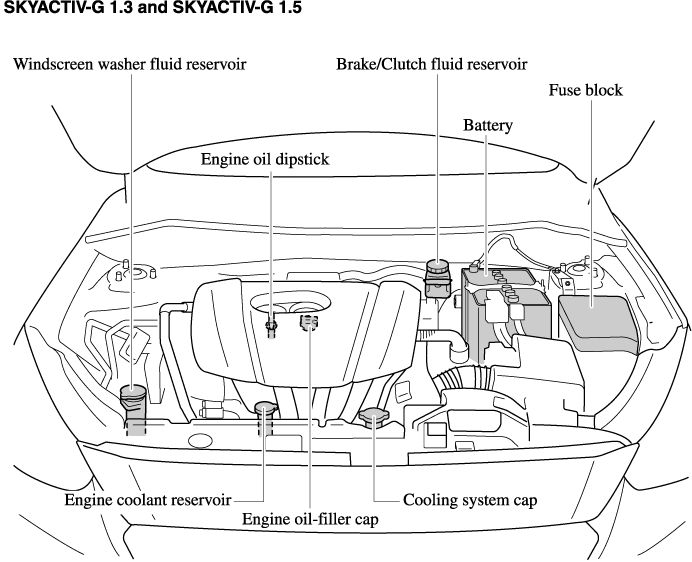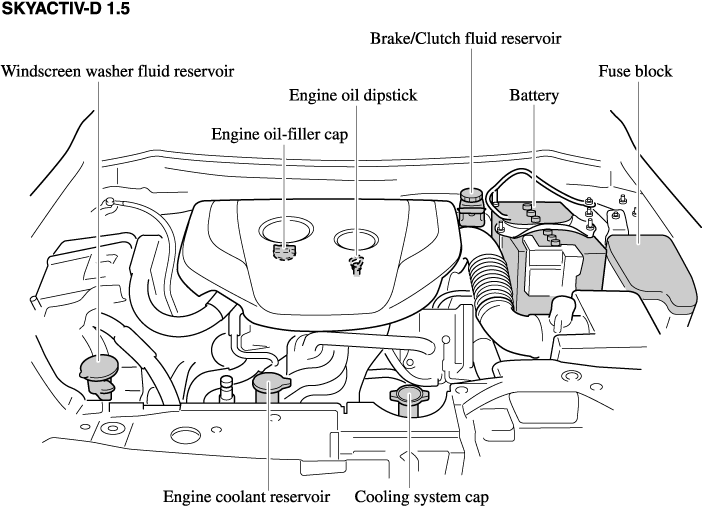Owner Maintenance Precautions
Bonnet
Engine Compartment Overview
Engine Oil
Engine Coolant
Brake/Clutch Fluid
Window and Headlight Washer Fluid
Body Lubrication
Wiper Blades
Battery
Key Battery Replacement
Tyres
Light Bulbs
Fuses


 Read this first
Read this first





















